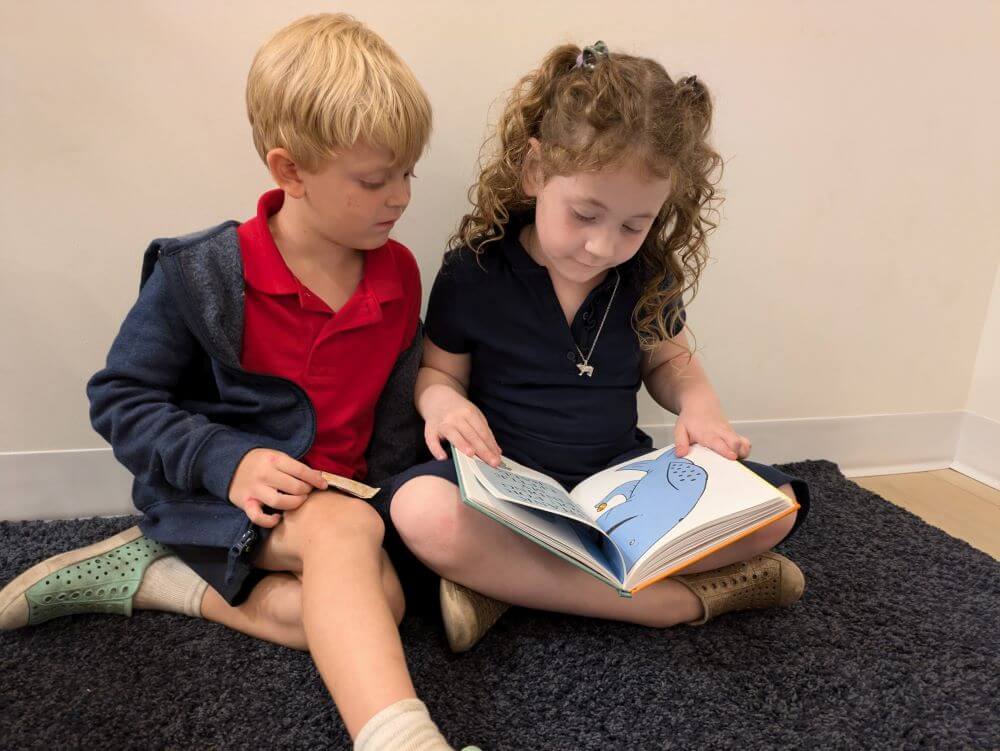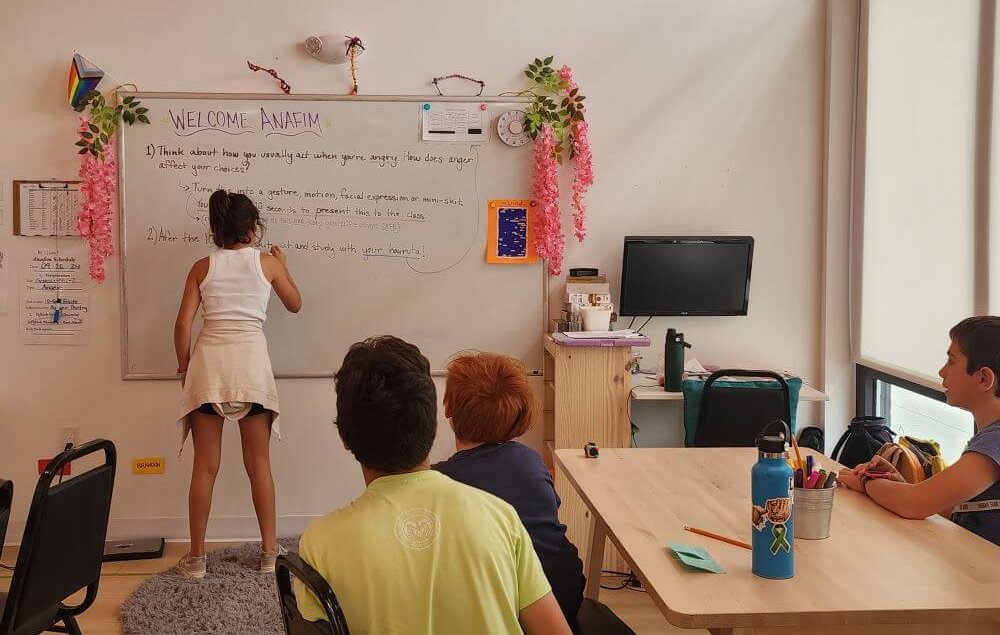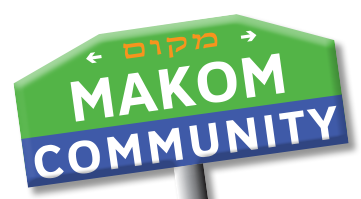
The whole educator team at Makom Community puts a lot of hard work into planning thoughtful, goal-driven, meaning-making lessons for our kiddos. We’re proud of our curriculum and excited to see what the kiddos do with it. And also, it’s important for us to let the learning truly follow our students’ interests and inquiries, even when that means scrapping our plans. Here are a few examples of how we let our learners take the lead in a given week.

On Wednesday, the Shorashim (1st-2nd graders) started out Textploration with Trent and me by reflecting on why it’s important to respond and help when we notice a problem, even if the problem doesn’t seem to directly affect us. When we started to shift towards the text from Yirmiyahu in Nevi’im (prophets), a first grader threw out one of our favorite questions: “Is this real? Like did all of this stuff with Bnei Yisrael (the Jewish people) and the prophets and Egypt and everything really happen?” We talked about how the Torah is a storybook, not a history book, and there are important lessons and ideas for us to learn from it regardless. The Shorashim came back with more questions (and answers!):
- Did people really call out to God?
- Is God real?
- I think God used to be, but isn’t anymore. Like God used to do things, like in the Torah stories, but doesn’t now.
- God is still real! And he heard that!
- Why he? Could be she instead!
- Yeah, God is sort of like Mother Nature.
- No one can fully know or understand God.
After exploring and debating the nature of God, a second grader came back with this question: “If all of this is made up, why do we bother doing all this stuff and celebrating holidays and all that?” One kid suggested that for the folks who do believe in God, that’s enough to want to celebrate holidays, etc. Another kid said that we wouldn’t have holidays without God, or at least without people’s belief in God. A third kid said that learning myths and legends and stories is fun and good to know. Also, you don’t have to believe in a character in a religion in order to be a member or participant in that religion. What an awesome conversation we wouldn’t have had if we didn’t let the kids lead the way with their interests.

Rather than needing to scrap a whole lesson plan, sometimes it pays to plan for questions like these. Liora, our Anafim Educator, built a structure into the Anafim (5th-7th grade) lessons to address parking lot questions every couple of weeks. Wednesday was the first parking lot question day. Liora and Ash (Anafim’s co-teacher) set up four stations at the four tables in the classroom, each with a different category of questions from their parking lot. The Anafim self-selected into groups to read resources and discuss questions about the nature of God, some specifics of Jewish practice, the character of Yaakov, and Jewish history. Each table group spent about 20 minutes exploring the questions kiddos had come up with over the previous few weeks, and then shared back our insights and new questions with the group:
- God is like a new born. God understands the world and sees it, but if you try to communicate with them, you won’t understand them.
- God is very hands off. God doesn’t play a role in my life.
- God exists, but nothing that is living is God. God is a wooden bowl.
- The first synagogue was inspired by Babylonian buildings.
- You’re not supposed to change your body because God created it and that would be disrespectful to God, but what are the boundaries of that? Like can I dye my hair? Get piercings? Change my clothes and wear makeup?
- What are Jewish perspectives on euthanasia?
We also have a structure to address burning questions that come up for the Nitzanim (3rd and 4th graders) and Anafim during tefilah (prayer). Kids are invited to write tefilah-related questions on the white board in the gathering space. They can also go up and provide answers to each others’ questions. By the end of tefilah we have an excellent, albeit somewhat chaotic, dialogue about a whole range of topics from the origins of the shofar to whether or not God is the source of everything. I try to reserve a few minutes (and only a few minutes—it’s hard! So many of the questions are so good!) of tefilah each day to read what’s on the board and invite more discussion.
This week we had some compelling conversations about the origins of prayer and God as the source. To consider how long ago prayer started, we zoomed out to discuss what prayer is for, how and why people use it. If prayers started as a way for people to have conversations with God or something larger than themselves or to otherwise try to make sense of the universe, then probably they were around as long as people have been. You can see more of the dialogue on this white board in the picture below.

These moments of kiddo-led inquiry are especially dear to me. As an educator at Makom Community, I feel so proud and lucky to be faced with dozens of questions from my students every day. I’m honored that they trust me to help them get answers, and excited at how often I get to reply, “I have an idea, but what do you think?” or “I’m not sure; let’s figure it out together.”
